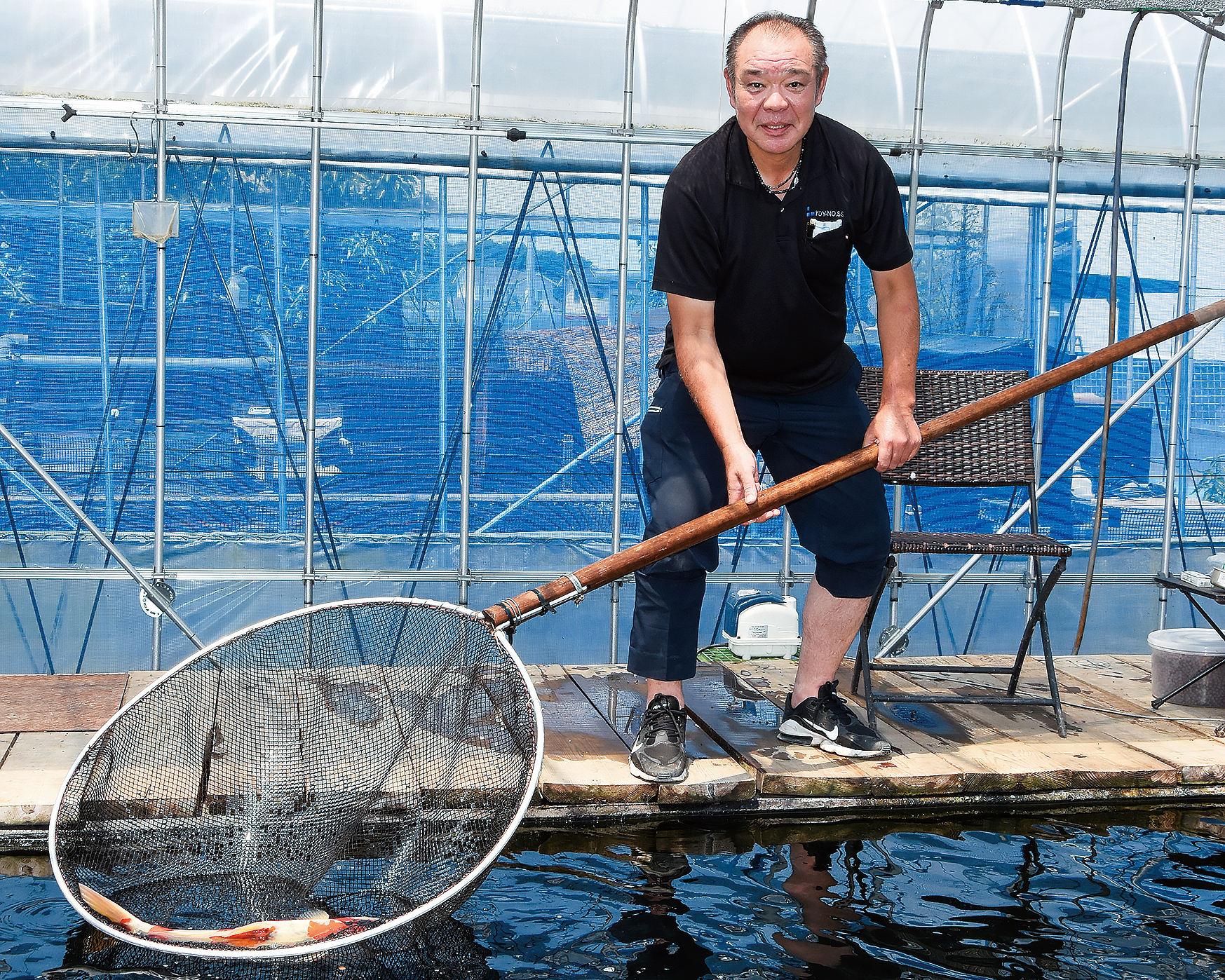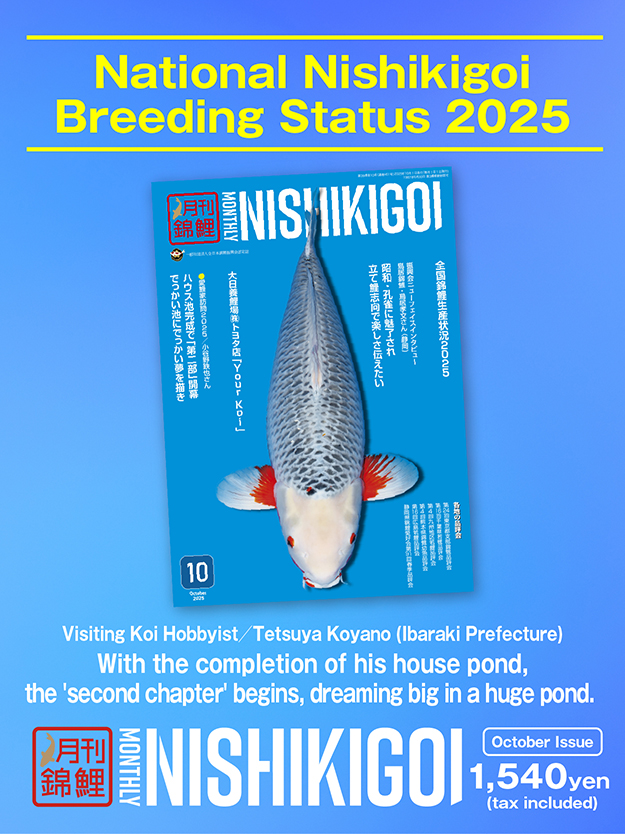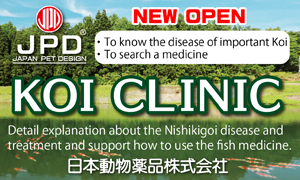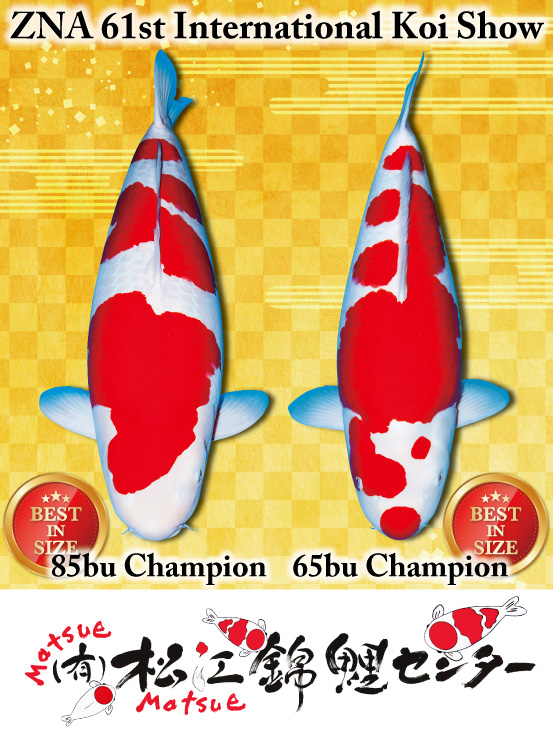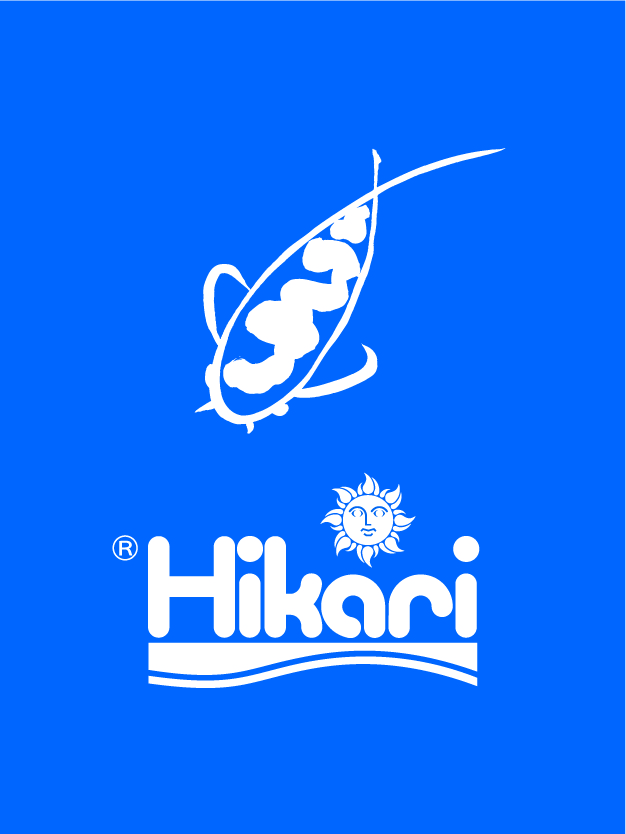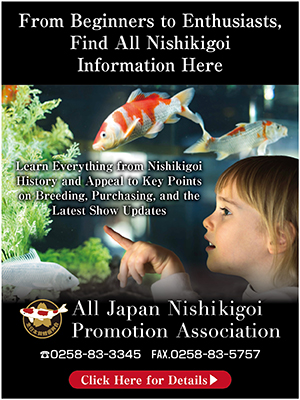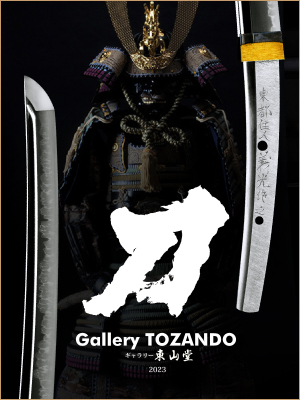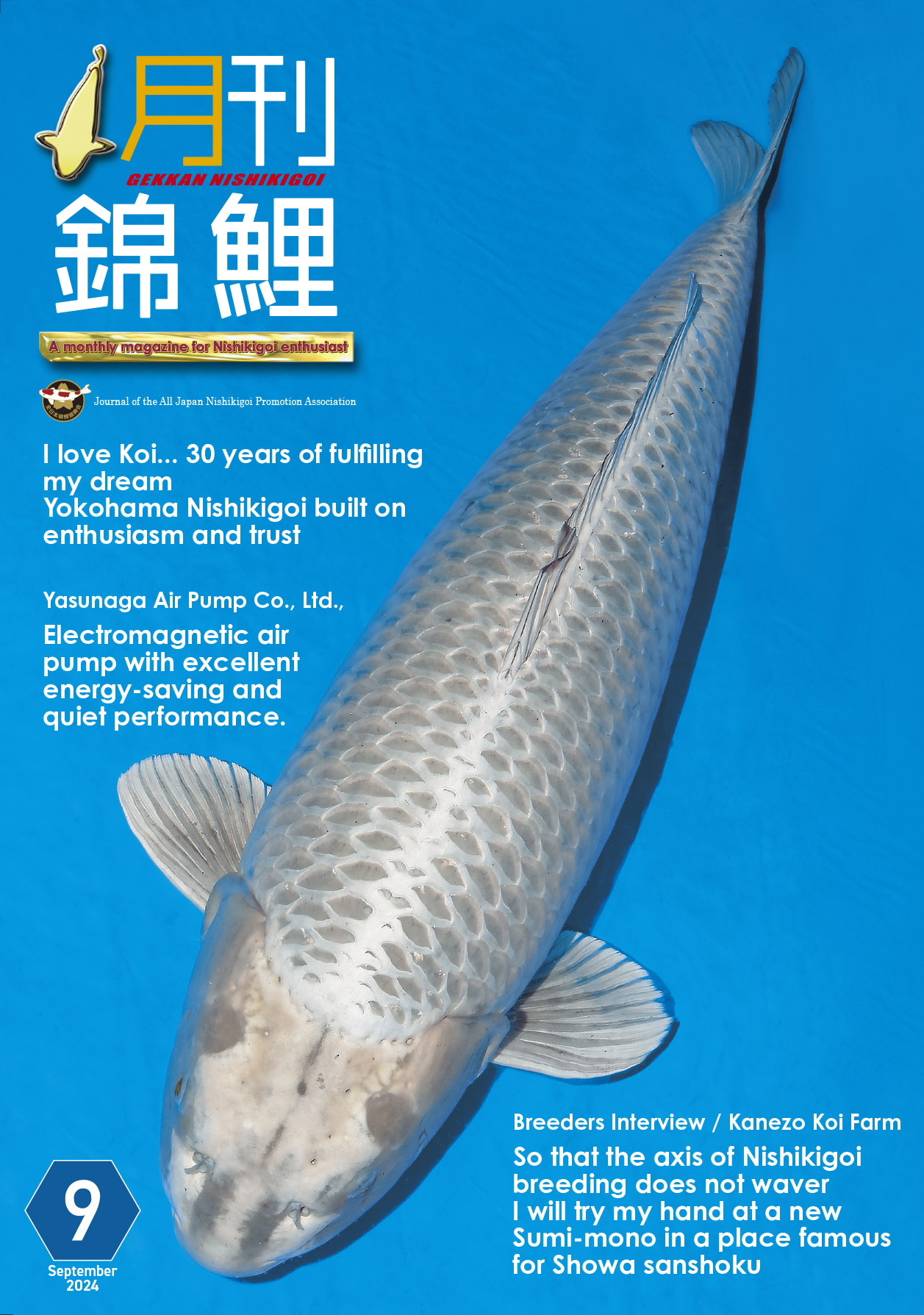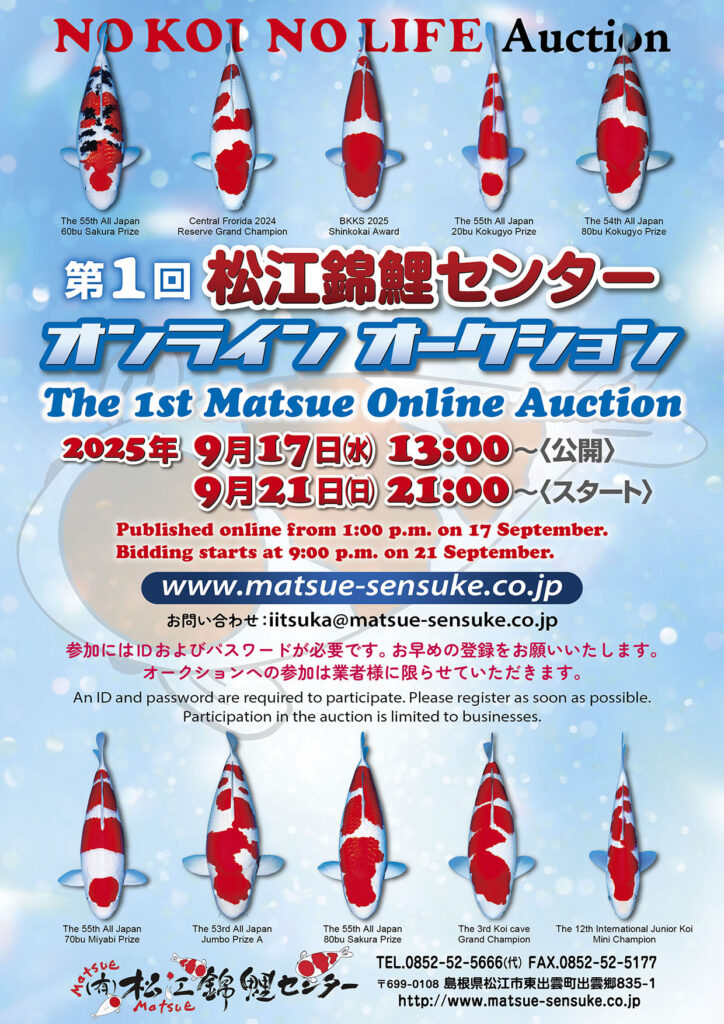Minimizing the number of rises and falls in a single flow is key to Kyo’s pond design. By directing water from the central settling tank through two chambers on each side, the system effectively provides the same level of filtration as a conventional four-chamber setup. The filter media used in combination with this system is Kyo’s top recommendation: the polypropylene “Moyai Drain Mat” from Yoshiwara Chemical Co., a product also used by major koi breeders. When sandwiched with a conventional Viny lock filter, it allows efficient filtration without clogging.
After passing through the filter chambers, one flow is directed to a custom-built aeration shower, while the other passes through a Wakishimizu Type 10 unit before returning to the pond. Each final chamber on both sides also allows a direct flow back to the pond. The filter is cleaned twice a year, in spring and autumn, but Tetsuya notes that the filter media remains relatively clean.
And he said, “Compared to the outdoor pond I used previously, maintenance and cleaning have become much easier. At this time of year—summer—I feed the koi about eight times a day, totalling nearly 5 kilograms, yet there’s still very little debris. I believe most of the waste is removed in the settling tank. It’s all thanks to Kyo’s design. I also built the aeration shower following his guidance, and it has made the fish more active.“
The 35-ton pond in the neighbouring greenhouse measures approximately 8 meters (26 feet) in length, 3 meters (10 feet) in width, and 1.5 meters (5 feet) in depth. The concrete settling tank was built at the same time as the pond, but to reduce costs, the filter chambers were installed using used FRP units, Kyo’s suggestion. Water from the upper layer of the settling tank is sent through two separate filter routes, returning to the pond at both ends. Jets and other devices are also used to create a circulating flow within the pond.
The filter media here is also the ‘Moyai Drain,’ with an aeration shower installed. Compared with the 70-ton pond, there is hardly any difference in performance other than the difference in water volume.
The two ponds are basically used according to the size of the koi, with 65 cm as the standard.
“I wanted to separate the large koi from the small ones, and this was something I simply could not compromise on,” Tetsuya said.
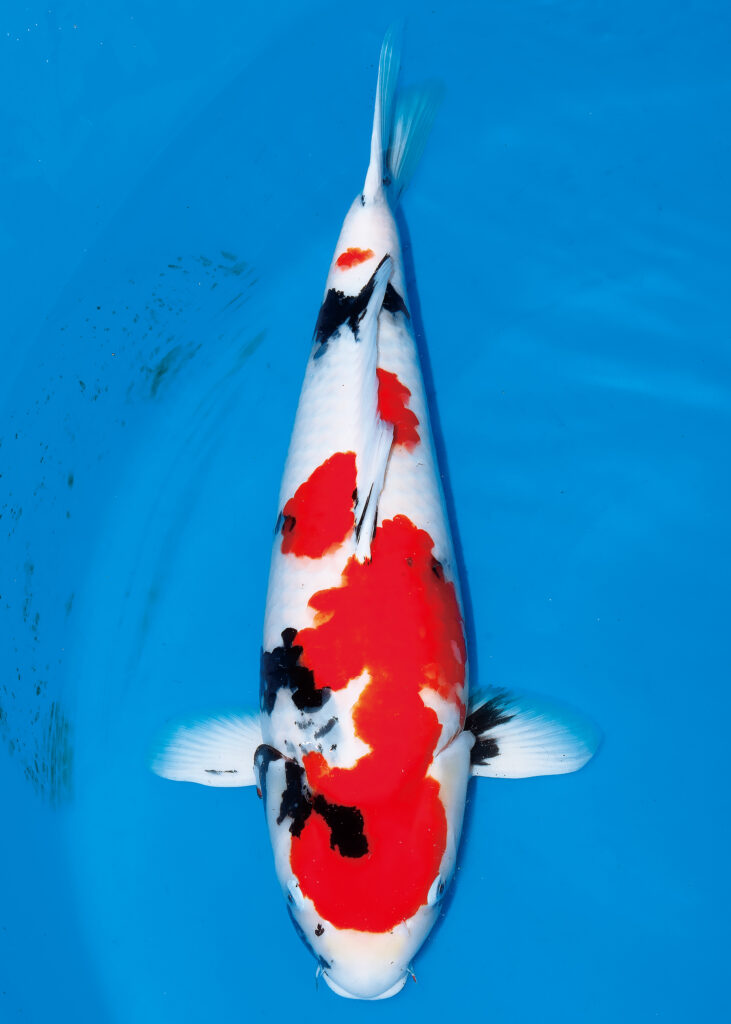

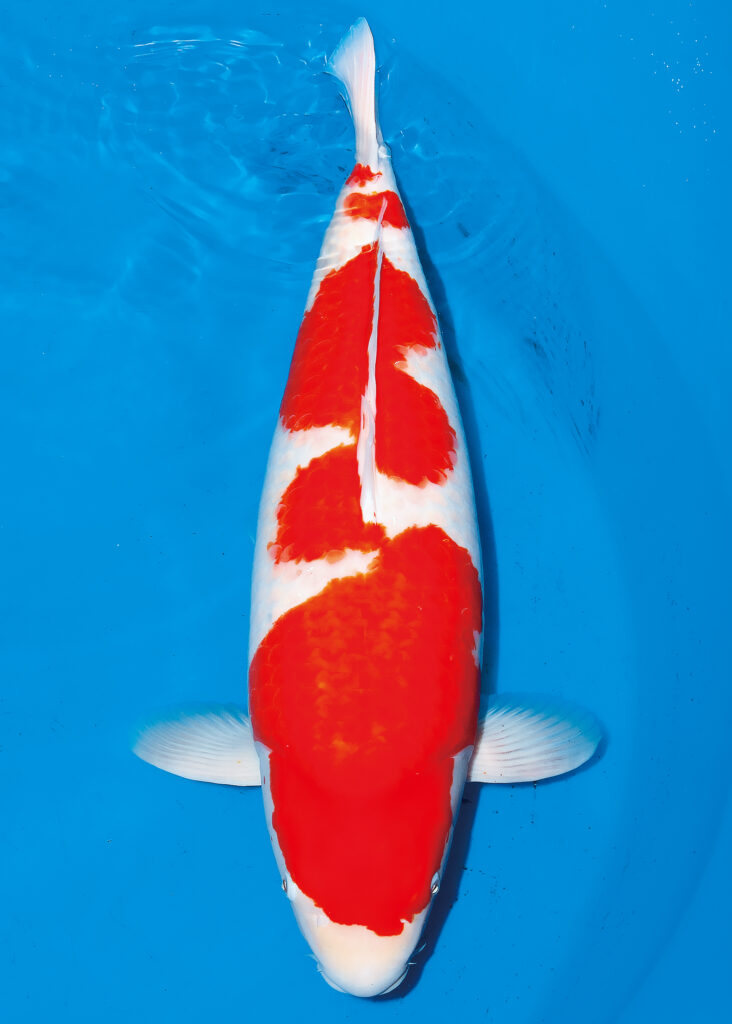
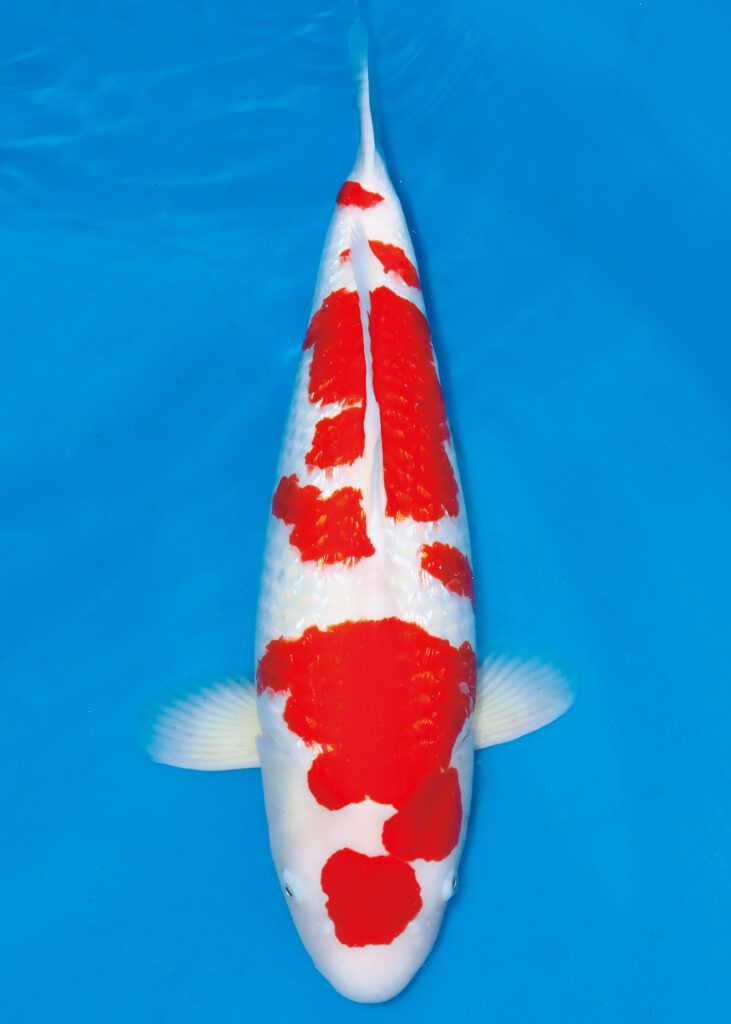
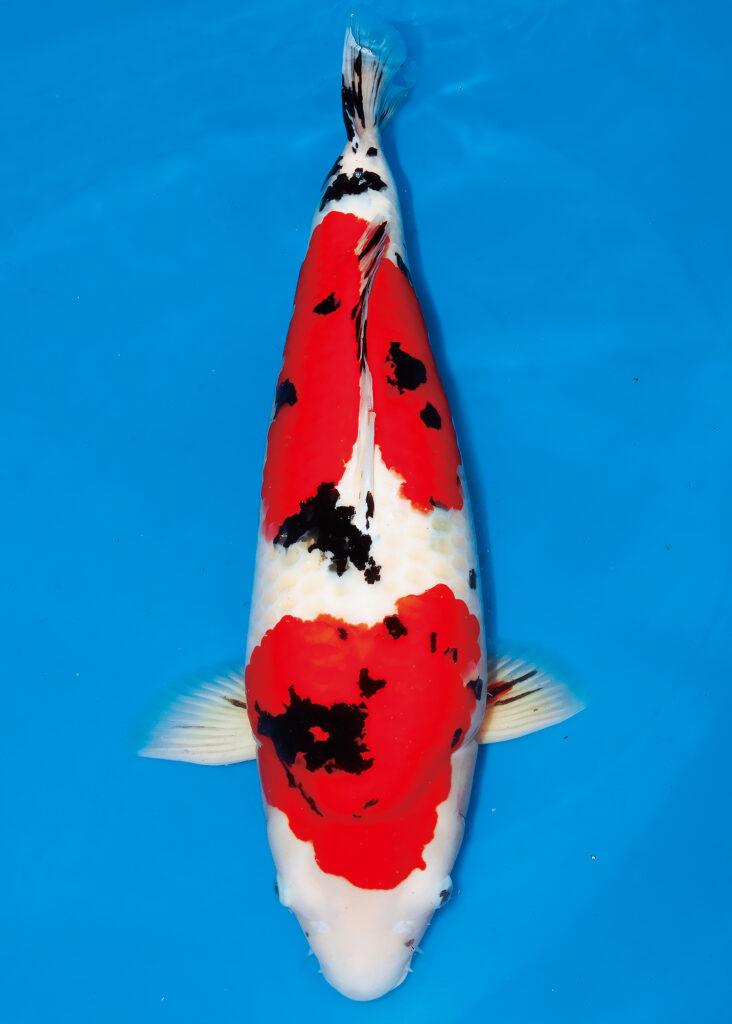

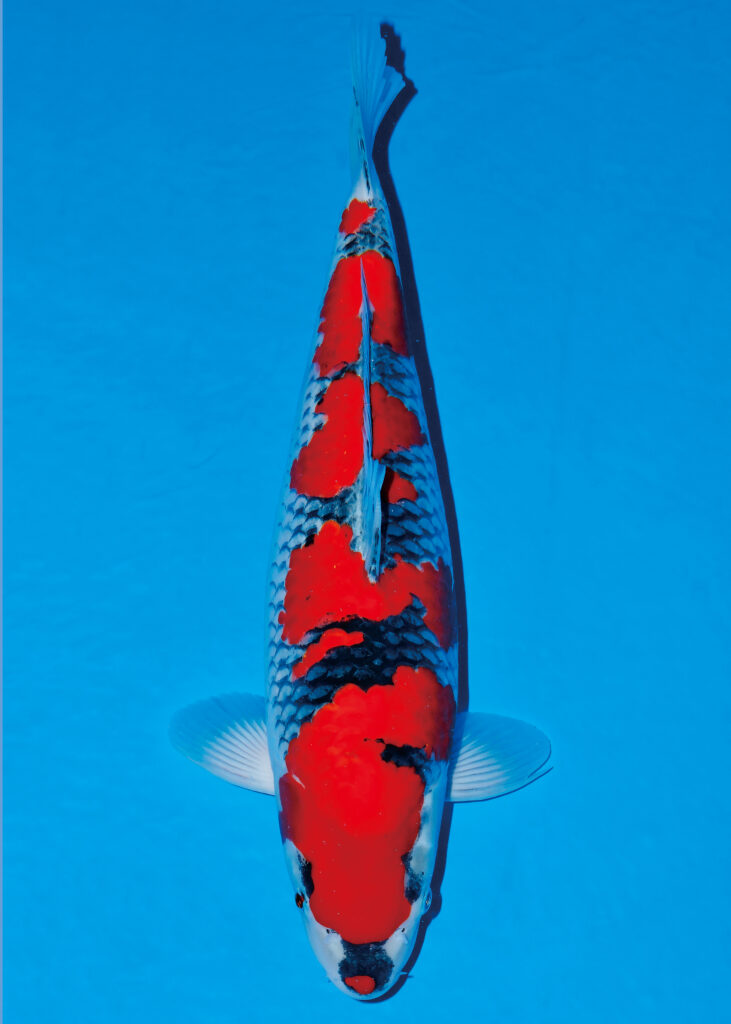

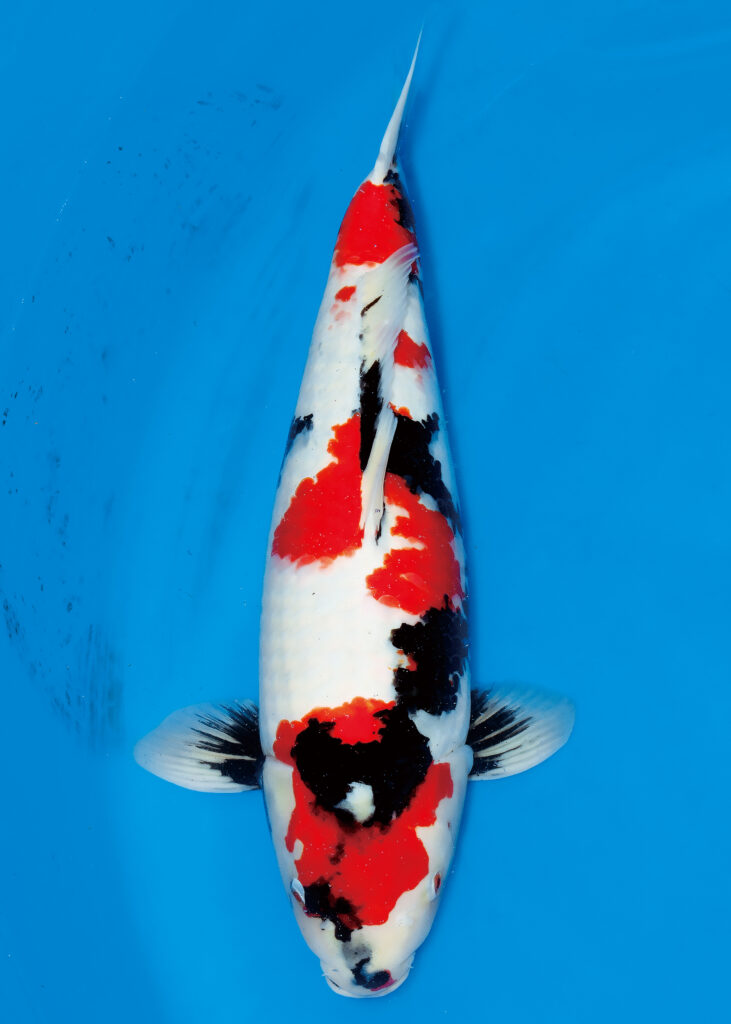
The previous pond fell short of the ideal finish.
Now, aiming for the shows and the Kokugyo Prize is within reach.
Tetsuya began keeping Nishikigoi about 30 years ago. The 20-ton garden pond he built at that time is still in use today.
“I’ve loved fish since I was a child, keeping goldfish, tropical fish, and even an arowana. Since I had a decent amount of land, I thought I could build a pond here, and that’s how I started keeping koi,” Tetsuya said.
At 20 tons, the pond was spacious enough to enjoy Nishikigoi as a hobbyist. However, with it being an outdoor pond affected by weather and temperature, Tetsuya increasingly felt it could not bring the koi to the quality he was aiming for. “They weren’t koi at a level to win awards at shows, but even the ones that came up beautifully from the wild pond could lose their hi colouring or get damaged over the winter. When feeding started in spring, they could develop gill problems… I always thought a greenhouse would be best for the koi, but it costs a lot, so it remained just a dream, ” Tetsuya said.
As mentioned earlier, he then met Kyo and began building the pond. It was completed last spring, and over the past year and a few months, he has gone through all four seasons. There have been no significant problems, and the koi have been raised smoothly.
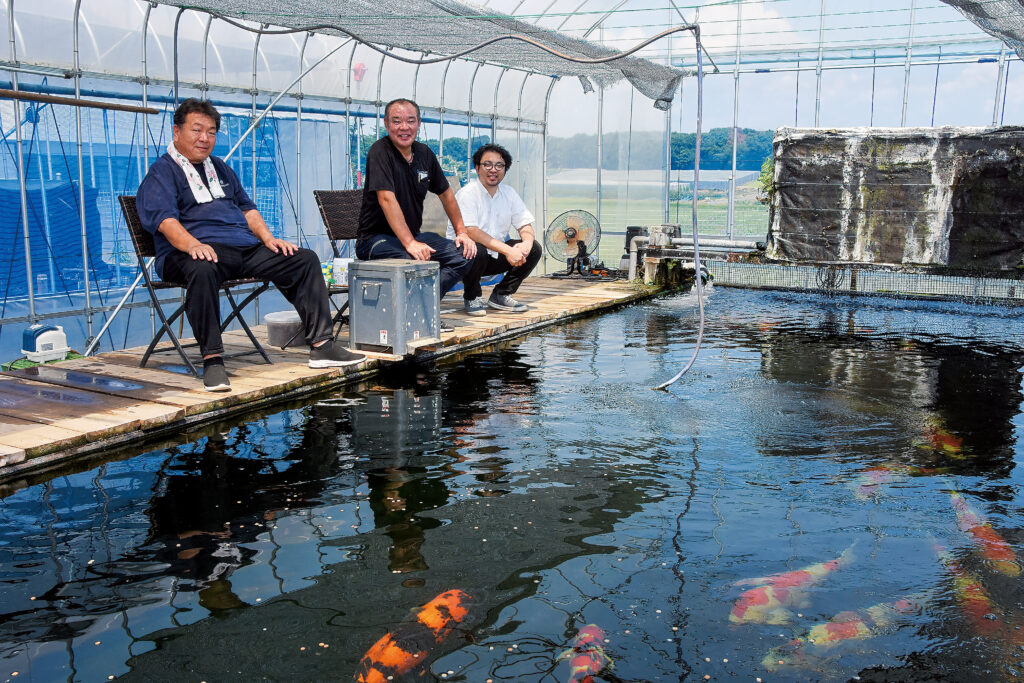

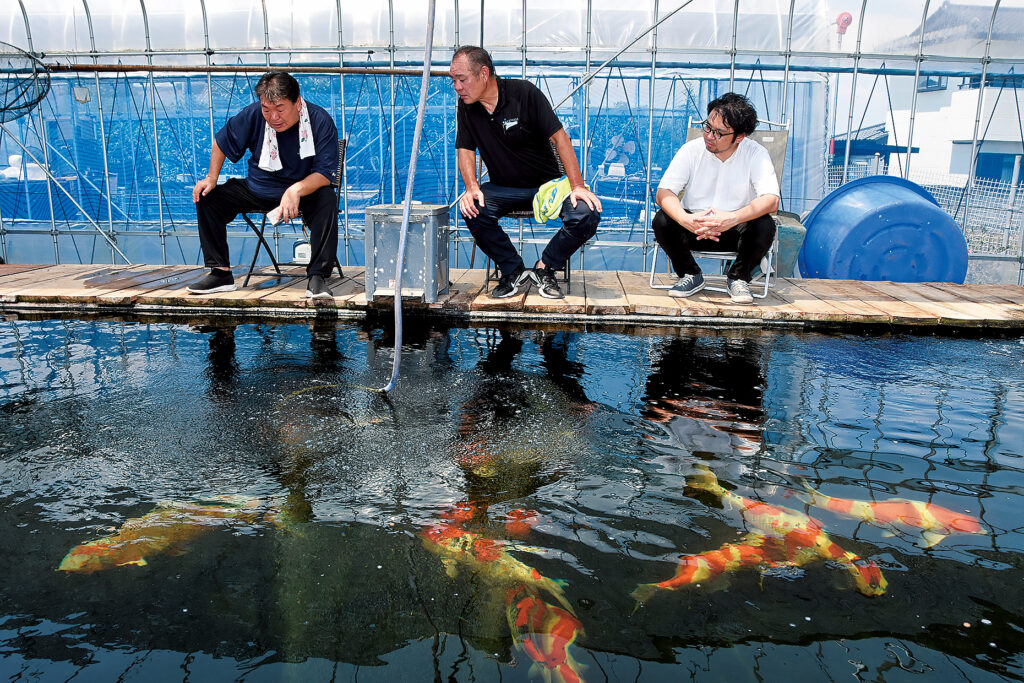
“Due to budget constraints, we went with a greenhouse, but even so, the temperature doesn’t drop below 15°C in winter. The well water stays around 15°C, and we can maintain that temperature. In the outdoor pond, feeding stopped from December to April, but in this pond, we can continue feeding during winter while keeping an eye on the temperature. The koi stay active even in winter, which is a huge benefit, as it allows us to maintain the condition they had when brought up from the wild pond,” Tetsuya said.
As for summer, the intense heat still has a significant impact, with water temperatures sometimes rising to around 32°C. Because the well water supply is relatively small compared to the pond’s volume, even continuous inflow doesn’t lower the temperature substantially. The fact that there are no buildings to block the sun and that the pond is exposed to direct sunlight from all directions likely contributes as well. Even so, the koi’s appetite hasn’t changed, and “I feed them eight times a day,” Tetsuya said.
“And the koi are growing very differently than they did in the garden pond, which I think is because they’re eating so well.” With the fish developing so nicely, it’s only natural to want to enter them in shows. His sights are set on the Kanto Regional Competition and the All Japan Combined Nishikigoi Show, with the ultimate goal being the Kokugyo Prize. Encountering koi with real potential and bringing out that potential in this pond… he says it’s a dream that’s far from impossible.
The construction of the pond has opened up new possibilities for top prizes at shows and the future of Koyano Koi Farm. Thirty years on, what will this ‘second chapter’ bring? Tetsuya, along with Kyo and their fellow koi hobbyists, could barely contain their excitement.

